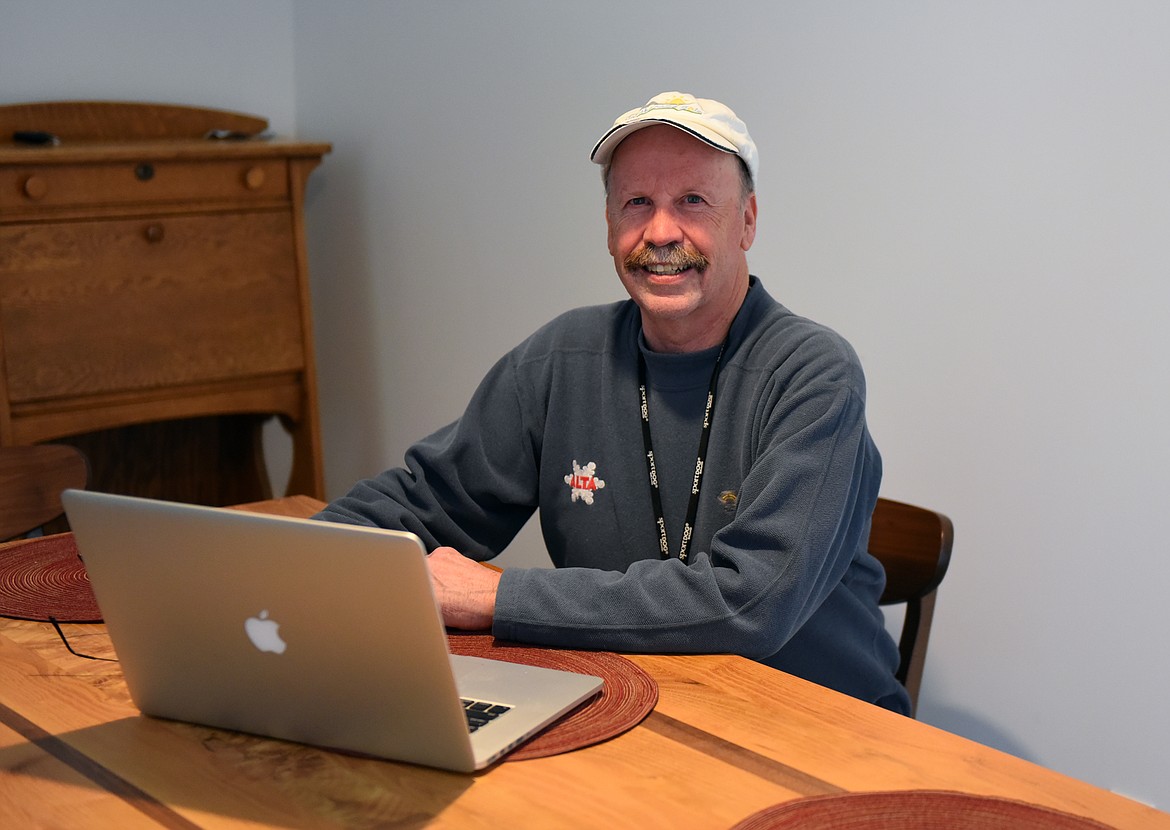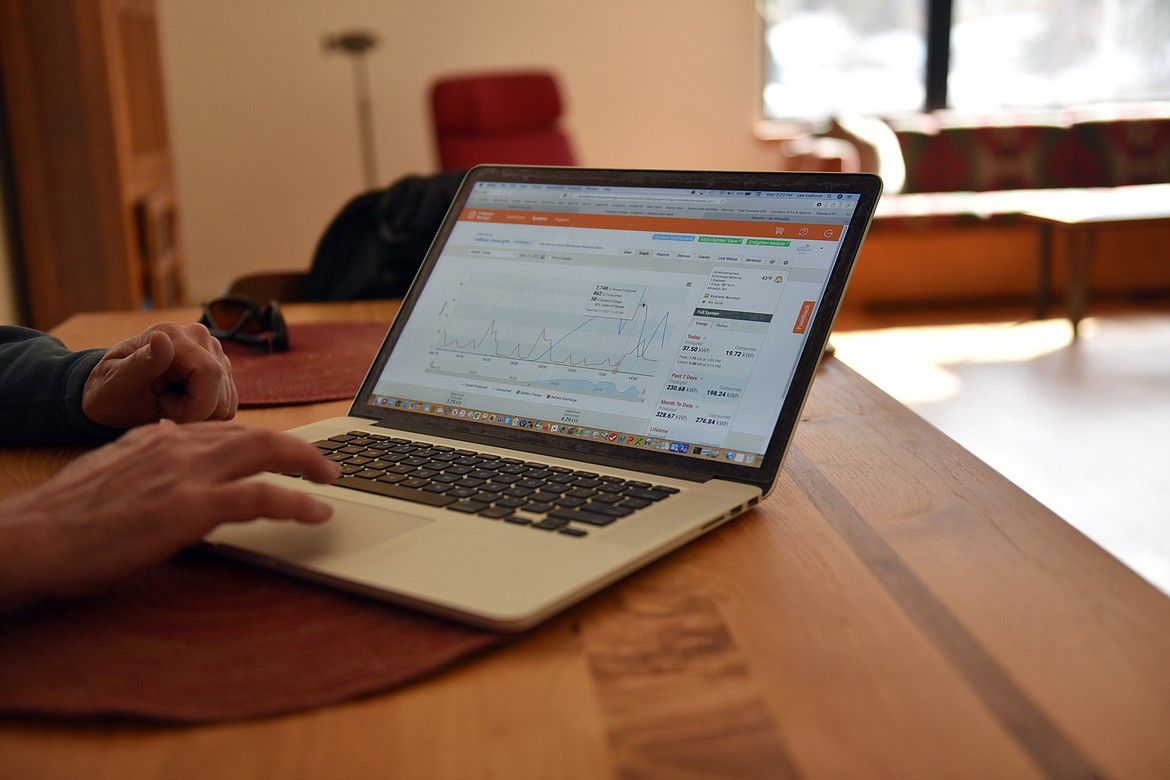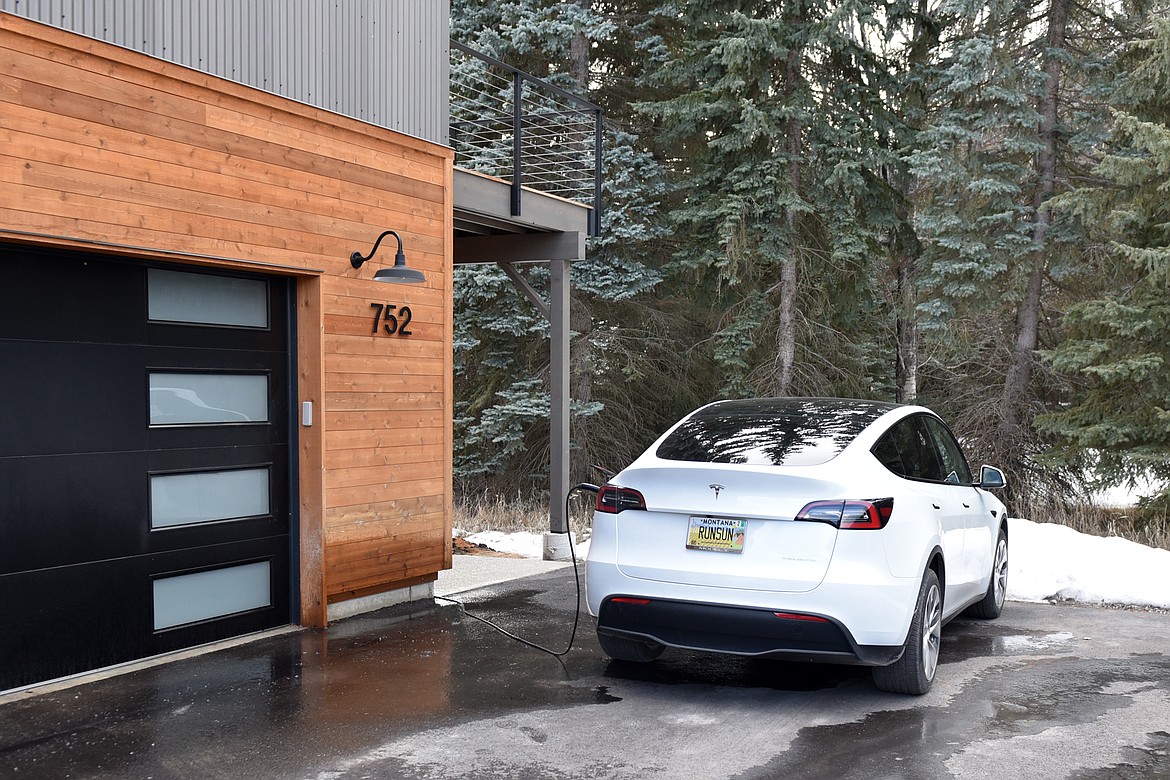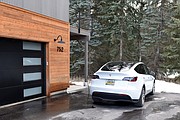Homeowner constructs house with goal of making it net zero
Focusing on the goal of generating enough electricity for his electrically-heated home and to charge an electric car, Lee Calhoun put a lot of attention to detail in the construction of his home and added solar panels to the roof.
He expected to meet his goal during the summer, but then in the first 10 days of March the solar panels began generating more energy than he was consuming. And now he seems to be on his way toward having a net zero home as those days continue to add up further.
“I use what it’s generating and the remainder goes out onto the grid and creates a credit,” he said. “I’m not hugely ahead at this point, but to be generating this much in early March is a big deal.”
Calhoun expected his home on Salmon Run to draw enough electricity in the summer months to put electricity back into the grid that then would be banked so during the winter months when the solar panels were generating less electricity the home would pull back from the grid.
“That the solar system is working it feels really good,” he said. “I’m excited because I knew this would happen, but not so early in the year. Hopefully by the middle of April I’m putting money in the bank.”
A net zero building is one that the total amount of energy used by the building on an annual basis is equal to the amount of renewable energy created on site or by renewable energy sources offsite. In this case, the home has a meter that monitors the amount of electricity used and also the amount sent back to the grid.
Calhoun retrofitted an older home in upstate New York to use a heat pump and solar panels with the same concept. The main goal there was to cut down on the heating costs because the home used an oil heating system that was costing $4,000 per year.
A retired engineer, Calhoun had a career working for Kodak “solving problems” working on cameras, projectors, copiers and printers. Calling himself a “climate refuge,” Calhoun after retirement was living in upstate New York where he says summers had become unbearable because of the heat. On his quest to find a place with a cooler climate and close to a ski area he found Whitefish.
Moving here he had an opportunity to design a home to be energy efficient. The home itself is wrapped with a one-and-a-half inch layer of foam insulation, the roof line is designed to provide shade for the windows in the summer months, the home is heated and cooled with a heat pump and the roof is facing south with the correct pitch to optimize sun collection for the solar panels. Since the home is almost completely air tight, it exchanges air in the home through a system that also heats the fresh air before it comes into the home to maximize efficiency of the heating system.
From a computer at his kitchen table, Calhoun can monitor the amount of electricity being generated by the solar panels on an almost instantaneous basis and can also track his electricity usage and generation over time.
Calhoun notes that electricity coming from Flathead Electric Co-op is relatively inexpensive, making it even more of a challenge to produce electricity at a rate less than what can be purchased from them. So the goal has been to make sure all the details were correct in the construction of the home and installation of the solar panels.
“If it’s optimized we can make power cheaper,” he said. “The residential target is to make electricity for less than 8 cents per kilowatt hour.”
The goal has been to save money, but also to be environmentally friendly, he notes.
A set of batteries inside the garage will also power the home if the electricity is down. Calhoun says he doesn’t expect to run the home off the batteries, but wanted to install the system to understand how it would work.
Through his business, Northstone Solar, Calhoun plans to work with homeowners and businesses on their own solar systems.
Calhoun says he’d like to see all new homes constructed be “solar ready” and optimized for future solar by being constructed with a south facing roof at a reasonable pitch for solar panels.
“If you’re building a house today you would expect it to be around for 100 years so it should have a south facing roof in case somebody wants to use it for solar someday. It’s a 100-year mistake if you don’t do that.”








